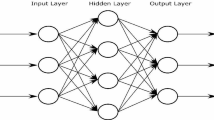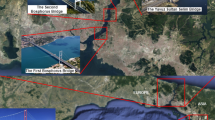Abstract
The recent Fukushima accident has posed several challenges to nuclear community with respect to safety of the nuclear power plants (NPPs) during simultaneous occurrence of seismic, Tsunami, multiple failures of safety systems and also maintaining the long term sub criticality during these events. Safety Instrumented Systems (SISs) are used in many application areas to reduce the likelihood of such severe accidents and/or to mitigate the consequences. An indigenously developed seismic switch is employed to safely shut down the reactor upon the occurrence of a seismic event. The reliability of seismic switch is of vital importance to ensure safe operation of a NPP. This paper presents the results of reliability study performed on digital and analog seismic switches to assess their performance.


Similar content being viewed by others
Abbreviations
- ∏G :
-
Reliability growth failure rate multiplier
- \(\mathop \prod \nolimits _{\text{C }}\) :
-
Capacitance failure rate multiplier
- λOB :
-
Base failure rate, operating
- \(\mathop \prod \nolimits_{\text{DCO }}\) :
-
Failure rate multiplier for duty cycle, operating
- ∏TO :
-
Failure rate multiplier for temperature, operating
- \(\mathop \prod \nolimits_{\text{S }}\) :
-
Failure rate multiplier for stress
- λ EB :
-
Base failure rate, environmental
- \(\mathop \prod \nolimits_{\text{DCN}}\) :
-
Failure rate multiplier, duty cycle—non operating
- \(\mathop \prod \nolimits_{\text{TE}}\) :
-
Failure rate multiplier, temperature–environment
- \(\lambda_{\text{TCB }}\) :
-
Base failure rate, temperature cycling
- \(\mathop \prod \nolimits_{\text{CR}}\) :
-
Failure rate multiplier, cycling rate
- \(\mathop \prod \nolimits_{\text{DT}}\) :
-
Failure rate multiplier, delta temperature
- \(\mathop \prod \nolimits_{\text{SJB}}\) :
-
Base failure rate, solder joint
- \(\mathop \prod \nolimits_{\text{SJDT}}\) :
-
Failure rate multiplier, solder joint delta temperature
- λ EOS :
-
Failure rate, electrical overstress
- λb :
-
Base failure rate
- ∏K :
-
Mating/unmating factor
- ∏P :
-
Active pins factor
- ∏E :
-
Environment factor
- ∏T :
-
Temperature factor
- ∏A :
-
Application factor
- ∏Q :
-
Quality factor
- ∏CC :
-
Contact construction factor
- MTBF:
-
Mean time between failure
References
Hai T, Lu L (2014) A quantitative software testing method for hardware and software integrated systems in safety critical applications, Probabilistic Safety Assessment and Management PSAM 12, June 2014
International Electro technical Commission (1998) “IEC 61508 First Edition: Functional safety of electrical/electronic/programmable electronic safety—related systems”
MIL-HDBK-338B (1998) Electronic reliability design handbook
Relex Architect (2008) Relex Reliability Studio
RIAC-HDBK-217Plus (2006) Reliability prediction models
Technology Transfer Document: Digital Seismic Switch (2015)
MIL-HDBK-217F (1991) Reliability prediction of electronic equipment, Notice 1 and Notice 2
Acknowledgments
This research was supported by Bhabha Atomic Research Centre, Mumbai. We thank our guides from Bhabha Atomic Research Centre who provided insight and expertise that greatly assisted the research.
Author information
Authors and Affiliations
Corresponding author
Rights and permissions
About this article
Cite this article
Reddy, S.V.S., Rajangam, K., Santhosh, T.V. et al. Reliability prediction of seismic switch for early detection of earthquakes around NPPs. Int J Syst Assur Eng Manag 7, 325–331 (2016). https://doi.org/10.1007/s13198-016-0501-8
Received:
Published:
Issue Date:
DOI: https://doi.org/10.1007/s13198-016-0501-8




